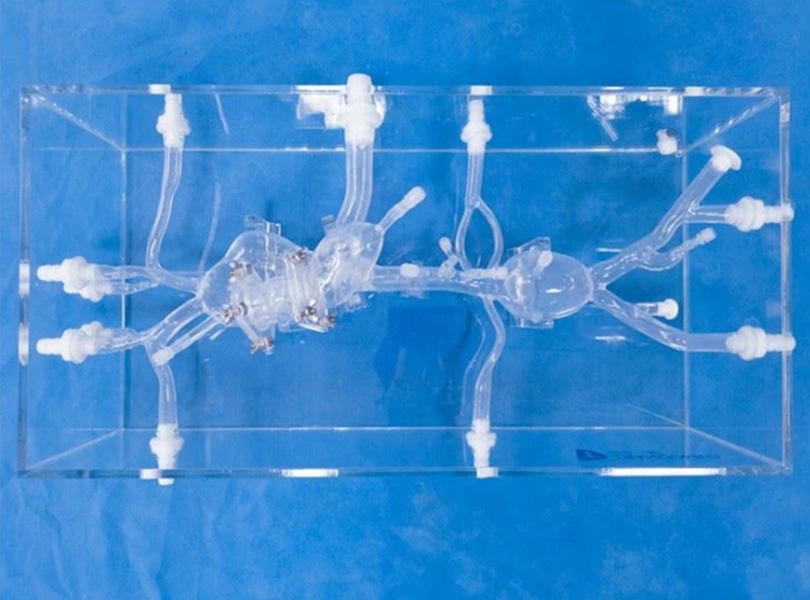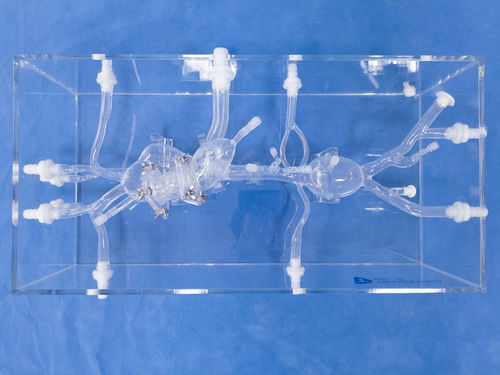
#Industry News
Understanding Abdominal Aortic Aneurysm
Model:Abdominal Aortic Aneurysm
An abdominal aortic aneurysm (AAA) is a serious condition characterized by the enlargement of the lower part of the aorta, the body's main blood vessel that supplies blood to the abdomen, pelvis, and legs. This condition poses significant risks, including potential rupture, which can lead to life-threatening complications. Understanding the causes, symptoms, and treatment options for abdominal aortic aneurysms is crucial for timely diagnosis and effective management.
Causes of Abdominal Aortic Aneurysm
The exact cause of abdominal aortic aneurysms is not always clear, but several risk factors are associated with their development, including:
1.Atherosclerosis: The buildup of plaque in the arteries can weaken the walls of the aorta, increasing the risk of an aneurysm.
2.High Blood Pressure: Hypertension can put stress on the walls of the aorta, making them more susceptible to aneurysm formation.
3.Smoking: Tobacco use is a significant risk factor for the development and progression of abdominal aortic aneurysms.
4.Family History: A family history of aortic aneurysms may predispose individuals to developing the condition.
Symptoms of Abdominal Aortic Aneurysm
Abdominal aortic aneurysms often do not cause noticeable symptoms, especially in the early stages. However, as the aneurysm grows, individuals may experience:
1.Pulsating Abdominal Mass: A throbbing sensation in the abdomen may be felt.
2.Abdominal or Back Pain: Discomfort or pain in the abdomen or lower back may occur.
3.Deep, Constant Pain: Severe, persistent pain may indicate a possible aneurysm rupture.
Diagnosis and Treatment Options
1.Diagnosis: Abdominal aortic aneurysms are typically detected during routine physical exams, imaging tests such as ultrasound, CT scans, or MRI, or when investigating symptoms related to the aneurysm.
2.Monitoring: Small aneurysms may be monitored regularly to track their growth rate and determine if intervention is necessary.
3.Surgical Repair: For larger aneurysms or those at risk of rupture, surgical repair may be recommended. This can involve traditional open surgery or minimally invasive endovascular repair using stent grafts.
4.Lifestyle Changes: Managing risk factors such as high blood pressure, quitting smoking, and maintaining a healthy diet and weight can help prevent the development or progression of abdominal aortic aneurysms.
The Abdominal Aortic Aneurysm model, based on actual CT data for physiological accuracy, is tailored for vascular intervention training and medical device development. Its structures include the left ventricle, aortic valve, aortic arch, subclavian artery, and more, enabling a comprehensive understanding of vascular anatomy.
This 3D-printed model facilitates simulated treatment of abdominal aneurysms and abnormal arch aortic valve replacements. Its versatility allows for the customization of abdominal aneurysms and the replacement of aortic valves with various specifications.
The Abdominal Aortic Aneurysm model offers a groundbreaking approach to medical training and device development in the realm of vascular interventions. By combining detailed anatomical structures with functional versatility, this model empowers medical professionals to enhance their skills, refine techniques, and advance the field of abdominal aortic aneurysm management. Embrace this innovative tool to elevate your training experience and drive excellence in vascular healthcare.





